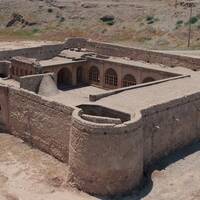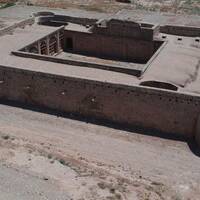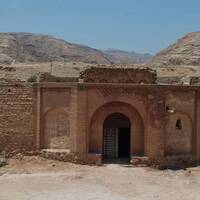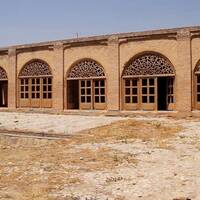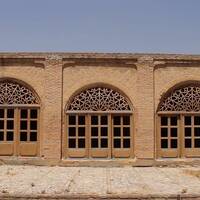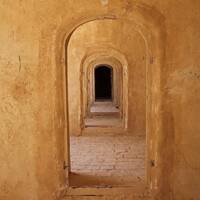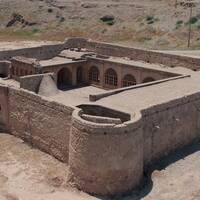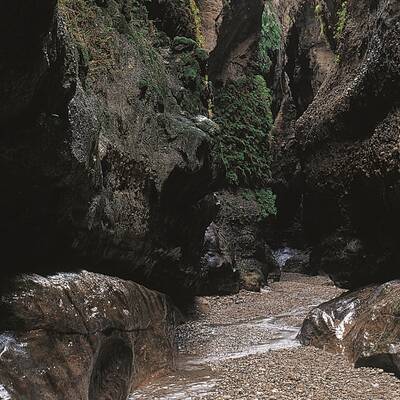Situated in western Iran and west of wild mountain of Zagros with a mountainous and semi-arid climate and oak forests, Ilam province is one of the attractive destinations of Iranian nature tourism. However, historical attractions of the province are lesser-known. One of these attractions is the historic castles such as Vali castle (in Ilam), Pour Ashraf castle and Hezar Dar castle in Darrehshahr, Posht Ghale in Abdanan, and Ghale Sam in Shirvan.
In 1326 AH - during Qajar Period - by the order of Ghulam Reza Khan, the governor of Ilam, in the Amirabad area, inside a strait called Kenjanchem, near the river of the same name a monument was constructed that is now known as Kenjanchem Castle. In this area the weather is dry and hot hence the castle was the winter home of the governor of Ilam and his family, and principally, it was to collect taxes from villagers during this season.
The castle is situated fifteen kilometers northeast of Mehran city - road Ilam to Mehran - on the way to Karbala. It has a rectangular plan with one floor and a basement. Its outside is simple and without any decorations. It is enclosed by a wall which on each side, there is a crenelated guard tower. This castle has three entrances on three sides and the main gate on the south side. One of the three entrances is located on the southeast side of the castle which its tiny fracture and arch make it a beautiful entrance.
After crossing the main entrance and vestibule, you enter the central courtyard with a large stone pond in the middle. The rooms are on the north, south and west sides and are nested. These rooms are connected to the central court by their four Iwans. And the bath is located next to the rooms. Decorated with marble, there was a room on the north side of the building which after being renovated, its walls are decorated with colored tiles. It was the largest room so a small pool was placed in the middle of it and this room was considered as an alcove in this building. In addition, there remains a wall on the east side. Regarding its plaster ornamentation, the researchers speculate that this room was either part of the alcove or the guest room.
This monument was registered on twenty-two Tir (the fourth month of the Solar Hijri calendar) 1397 SH, as one of the Iranian historical monuments by number 2743. Although it was abandoned for a while, this remarkable castle was opened to tourists after its restoration and renovation.

